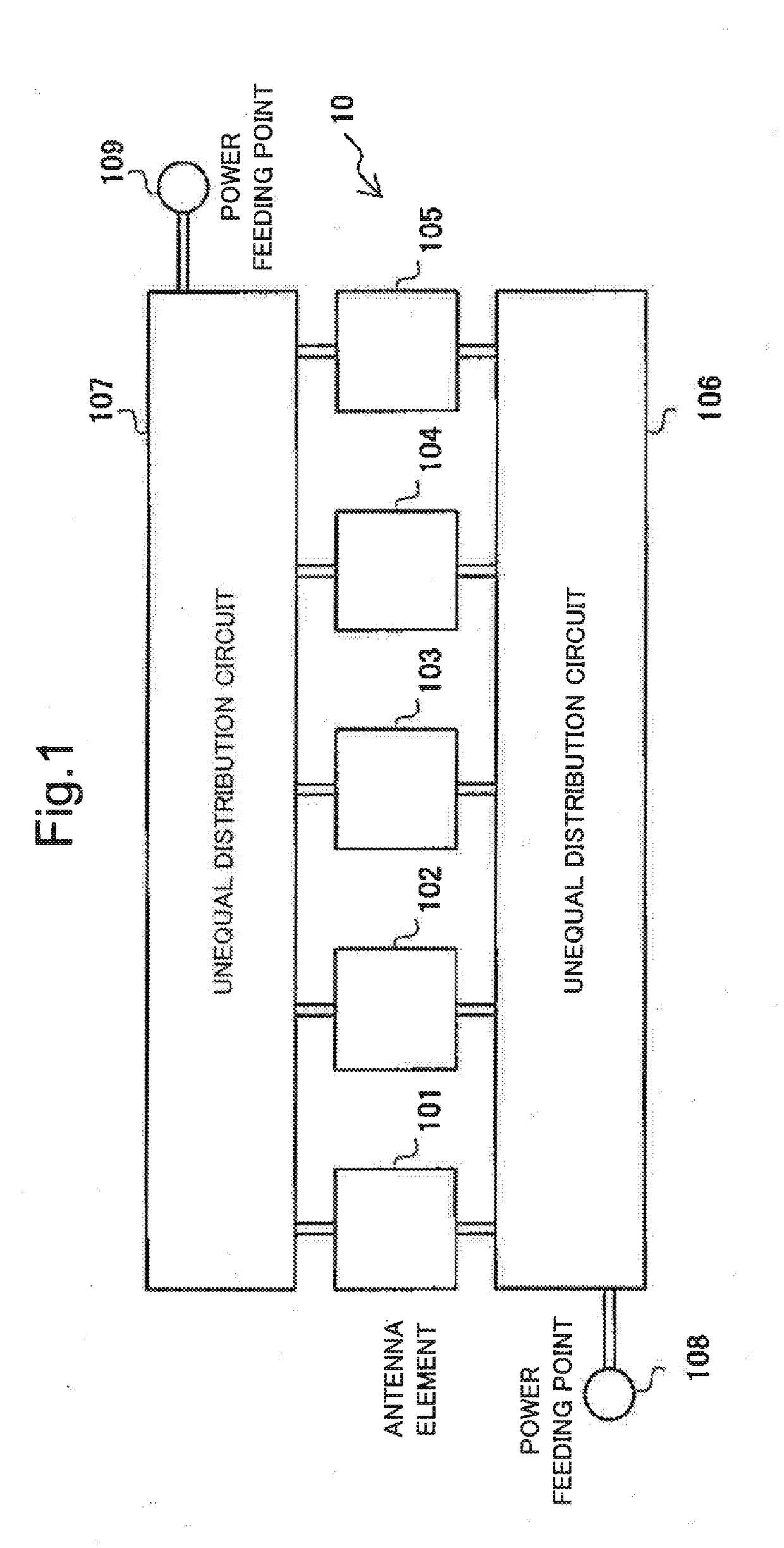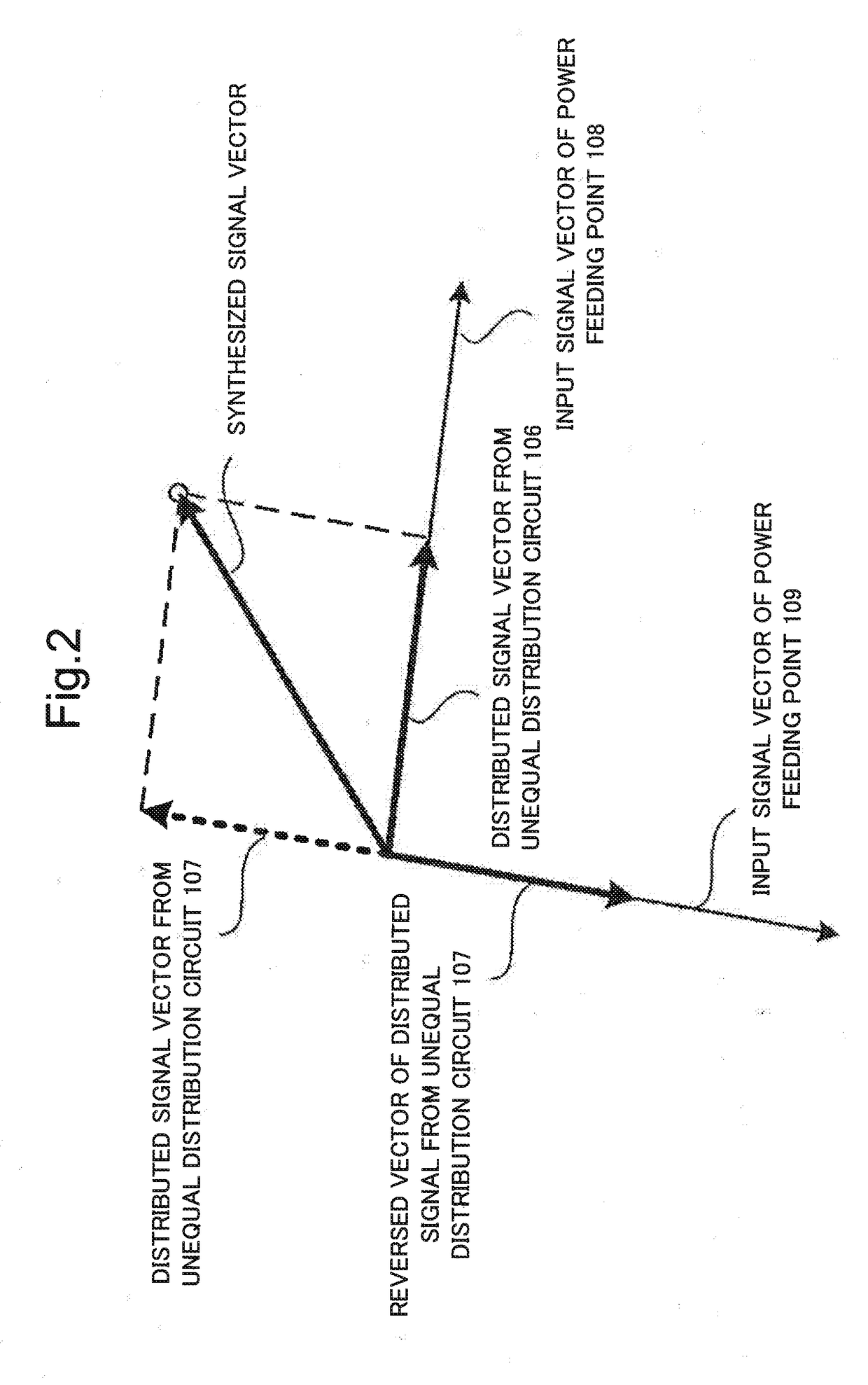Patch array antenna, directivity control method therefor and wireless device using patch array antenna
a technology of directivity control and antenna, which is applied in the direction of antennas, individually energised antenna arrays, electrical appliances, etc., can solve the problems of increasing the size of the rf circuit, increasing the cost of the antenna, and low durability of the dielectric phase shifter, so as to achieve low cost, increase the number of active components, and high durability
- Summary
- Abstract
- Description
- Claims
- Application Information
AI Technical Summary
Benefits of technology
Problems solved by technology
Method used
Image
Examples
examples
[0123]FIG. 12 illustrates a first example of the patch array antenna according to the present invention. A patch array antenna 120 thereof includes a pattern in which each of first and second unequal distribution circuits 1206 and 1207 is illustrated in a frame indicated by a dotted line. In the first unequal distribution circuit 1206, a wiring distance of a first microstrip line from a first power feeding point 1208 to first to fourth antenna elements 1201 to 1204 that are feeding targets is constant. Similarly, in the second unequal distribution circuit 1207, a wiring distance of a second microstrip line from a second power feeding point 1209 to second to fifth antenna elements 1202 to 1205 that are feeding targets is constant. In the first and second unequal distribution circuits 1206 and 1207, in order to match impedances and achieve first and second distribution ratios determined, patterns of the first and second microstrip lines are formed as follows.
[0124]A distribution ratio...
PUM
 Login to View More
Login to View More Abstract
Description
Claims
Application Information
 Login to View More
Login to View More - R&D
- Intellectual Property
- Life Sciences
- Materials
- Tech Scout
- Unparalleled Data Quality
- Higher Quality Content
- 60% Fewer Hallucinations
Browse by: Latest US Patents, China's latest patents, Technical Efficacy Thesaurus, Application Domain, Technology Topic, Popular Technical Reports.
© 2025 PatSnap. All rights reserved.Legal|Privacy policy|Modern Slavery Act Transparency Statement|Sitemap|About US| Contact US: help@patsnap.com



